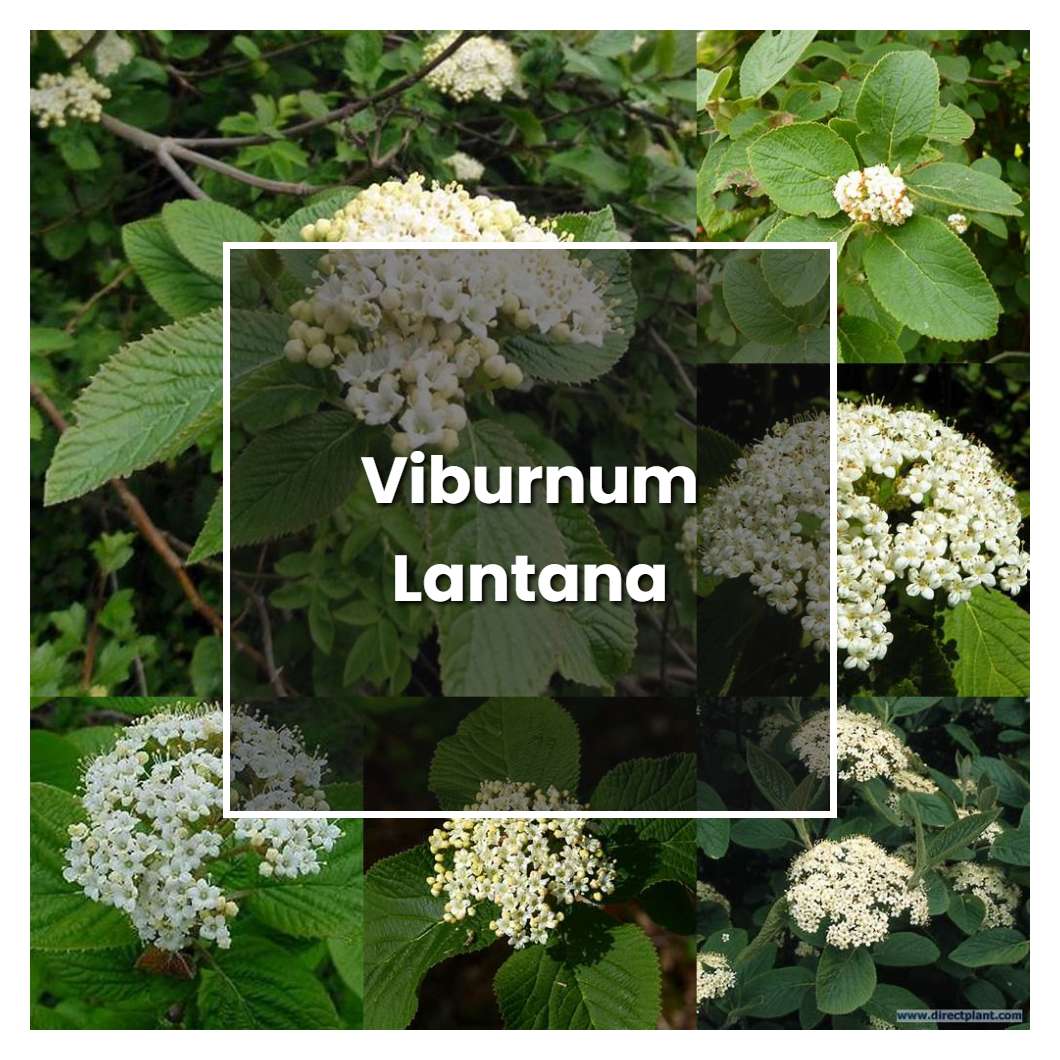Viburnum lantana is a popular ornamental plant in gardens and parks. Growing to a height of 2-3 m (6.6-9.8 ft), it has dark green, glossy leaves and white flowers clustered in large, flat-topped clusters (corymbs). The fruits are small, red berries, which are poisonous to humans but popular with birds.

Related plant:
Viburnum Opulus Compactum
Related plant:
Viburnum Opulus Roseum
About soil condition, it prefers deep, fertile, humus-rich, well-drained soils, but it is tolerant of a wide range of soils conditions. Avoid overly wet soils. It has a strong root system and will also tolerate some drought once established.
So, like the other viburnum, the lantana does best in full sun to partial shade. It's a good idea to give it some afternoon shade in hot summer areas. It's also tolerant of a wide range of soils, as long as the soil is well-drained.
The temperature condition of the viburnum lantana is very important to its growth and development. This plant thrives in temperatures that are between 68 and 72 degrees Fahrenheit. It can also tolerate temperatures that are as low as 50 degrees Fahrenheit. However, it will not do well in temperatures that are higher than 80 degrees Fahrenheit.
Ideal humidity condition for this plant is 50% and above. Viburnum lantana can tolerate average to low humidity, but will not tolerate drought conditions. If the plant is kept too dry, the leaves will begin to drop and the plant will eventually die.
About fertilizer, this type of plant does best with a slow-release fertilizer that is high in phosphorus. It is important to fertilize in the spring, before new growth begins. Root development is important for this plant, so make sure the roots have plenty of room to grow.
Pruning is an important part of caring for your viburnum lantana. You should prune in late winter or early spring, before new growth begins.Remove any dead or damaged branches, as well as any branches that are rubbing against each other. You can also prune to shape the plant, or to encourage new growth.
Propagation is best done by softwood or semi-ripe cuttings taken in summer, as seed does not breed true to type. Place the cuttings in a propagator or seal a plastic bag around the pot to retain moisture. Rooting hormone may help.
Usually, the plant growth rate is moderate to rapid, with an annual increase of 13 to 24 inches being common. However, the shrub will benefits from an annual pruning to encourage its best possible growth.
Common problems for this kind of plant are powdery mildew and stem canker. Powdery mildew is a white, powdery fungus that appears on the leaves and stems of the plant. Stem canker is a bacterial infection that causes the stems of the plant to rot.
Source:
Wayfaringtree Viburnum (Viburnum lantana) - Selecting Shrubs
Wayfaringtree Viburnum (Viburnum lantana)-Hort Answers
Viburnum lantana habit: UIPLANTS - woodyplants.nres.uiuc.edu
